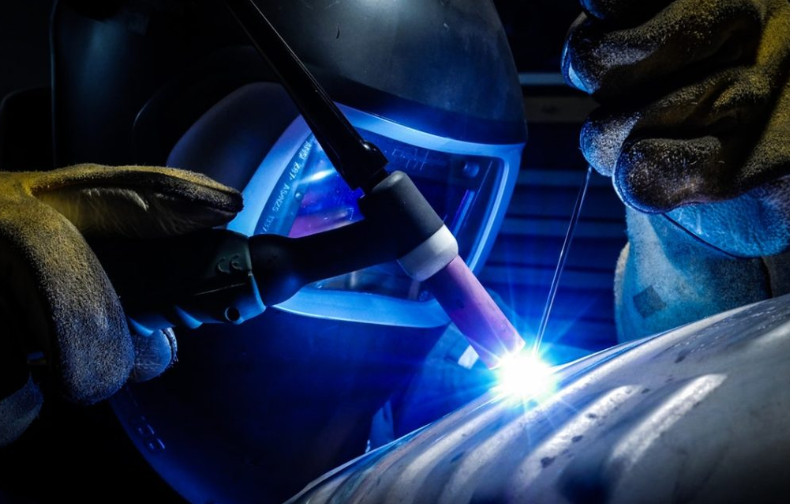Table of Contents
- Introduction to Precision Welding
- Key Tools for Precision Welding
- Understanding Welding Techniques
- Safety Measures in Welding
- Advances in Welding Technology
- Maintenance and Care for Welding Equipment
- Applications of Precision Welding
- Future of Precision Welding
Introduction to Precision Welding
Precision welding is a sophisticated process that merges artistic flair with scientific rigor. It involves creating highly accurate and durable joints by fusing materials at precisely controlled temperatures. Whether you’re operating an AC DC Tig Welder or another advanced welding machine, understanding the nuances of this craft is crucial for achieving the ideal results. Over the years, welding has seen significant advancements, allowing for greater efficiency, accuracy, and application diversity.
From extensive infrastructure projects to smaller, artisanal crafts, precision welding’s applications are vast and varied. Thus, keen knowledge of best practices, appropriate tools, and advanced techniques is essential, not only for ensuring high-quality output but also for safeguarding the welder’s health and well-being during the process.
Key Tools for Precision Welding
Welding Machines
Central to the practice of precision welding is the welding machine. Various types of machines are available, each designed for specific tasks and materials. The decision between utilizing TIG, MIG, or another method should be based on the specifics of the project. TIG welders, for instance, are renowned for their ability to produce clean, high-quality welds, making them a staple in industries where aesthetic and structural integrity are non-negotiable. The precision offered by TIG welding technology is unmatched for detailed work on metals such as aluminum and stainless steel.
Protective Gear
Safety in welding cannot be overemphasized. Proper protective gear is indispensable, safeguarding the welder from the hazards of extreme heat and harmful radiation. Equipment such as auto-darkening helmets, heat-resistant gloves, and aprons are essential components of a welder’s arsenal. These tools are designed to provide comprehensive protection while enhancing comfort, thus making the task both safer and more efficient.
Understanding Welding Techniques
TIG and MIG Welding
TIG (Tungsten Inert Gas) and MIG (Metal Inert Gas) welding stand out among others for their effectiveness and precision. TIG welding is particularly suitable for fine, detailed tasks requiring an immaculate finish, making it highly sought after for tasks in the aerospace and automotive industries. On the other hand, MIG welding provides rapid adhesion and is commonly used in structures where the speed of production is critical, such as in steel erection and heavy equipment manufacturing.
Other Popular Methods
Though TIG and MIG are highly popular, other techniques such as stick welding remain popular in industry. It offers versatility and affordability, making it suitable for a wide range of conditions and materials, including rural and remote applications where simplicity and reliability are paramount.
Safety Measures in Welding
Safety Equipment
Safety equipment plays a pivotal role in reducing the risks associated with welding. Comprehensive protection involves the use of fire-retardant clothing, safety goggles designed to shield eyes from harmful UV rays, and appropriate respiratory protection that prevents inhalation of dangerous fumes. An investment in quality safety gear protects both the welder and the integrity of their work.
Best Practices
Adhering to best practices in welding isn’t merely about following guidelines but about fostering a safer and more efficient working environment. Practices such as ensuring proper ventilation, regular equipment inspections, and maintaining cleanliness help mitigate risks. Keep abreast of industry standards and regulatory requirements to uphold safety and quality in all welding tasks.
Advances in Welding Technology
Automation in Welding
Automation has ushered in a new era of welding, enabling superior precision and productivity. Robotic welders can execute complex tasks consistently and with minimal errors, thus reducing the need for manual intervention and improving safety. This transformation is particularly evident in high-volume production settings, such as automotive and heavy machinery manufacturing.
New Welding Alloys
Technological advances have led to the development of new welding alloys designed to optimize strength, durability, and weight. These materials are integral to advancing industries like aerospace, where the demand for lightweight yet robust components is ever-increasing. The implications of these innovations are expansive, opening new avenues for design and engineering excellence.
Maintenance and Care for Welding Equipment
Regular Checkups
Conducting regular checkups is vital for ensuring that welding equipment performs optimally. Regular inspections can help identify issues, such as part wear or potential fatigue before they develop into serious problems. It ensures efficiency and reliability, reducing downtime and maintaining high performance standards.
Cleaning and Maintenance
Routine cleaning of welding equipment is crucial to maintain its longevity and performance. Accumulation of dust and debris can impair functionality and safety, highlighting the need for a consistent maintenance regimen. Implementing a regular cleaning schedule helps to prevent damage and malfunctions, ensuring that equipment remains ready for use.
Applications of Precision Welding
Industry Usage
Precision welding is fundamental across various industry sectors, including aerospace, automotive, and construction. It serves critical roles, ranging from fabrication of parts to repairs of existing infrastructure. The ability to create durable joints without compromising on weight or strength is particularly valuable in producing high-performance components.
Artisanal and Craft Applications
Beyond industry, precision welding finds a niche in art and design. Metalworkers and sculptors use welding techniques to bring their creative visions to life, achieving intricate designs and robust constructs that might not be possible using other means. The combination of skill and creativity in this domain showcases the artistry behind every weld.
Future of Precision Welding
Trends
The future of welding is bright, with emerging trends promising to reshape industry norms. Innovations in welding technology focus on creating smarter solutions, integrating digital controls, real-time monitoring, and advanced materials that enhance the precision and efficiency of welding techniques.
Potential Developments
As research and development continue to unfold, potential advancements in both materials science and machine learning are set to revolutionize the field further. These technologies could lead to new welding methodologies that outperform those currently in existence, thereby broadening the scope of possibilities for industrial applications and beyond.

